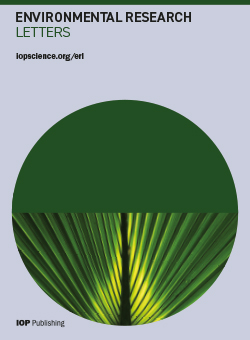全球可持续发展设想方案导致陆地生物多样性在不同地区出现不同结果
IF 5.6
2区 环境科学与生态学
Q1 ENVIRONMENTAL SCIENCES
引用次数: 0
摘要
减缓气候变化 (CC) 和扭转生物多样性减少的趋势是相互关联的全球紧急优先事项。应对这两种危机的战略必须考虑关键应对措施之间的关系、协同作用和权衡,包括可持续生产和消费模式、保护区 (PA) 和气候减缓政策 (CP)。在本文中,我们回顾了全球环境综合评估模型(IMAGE)中的大量情景(n = 96),这些情景描述了土地利用、温室气体排放的未来发展及其对气候变化和生物多样性的影响。我们计算了全球平均气温升幅(GMTI)和植物的平均物种丰度(MSA),这是衡量当地陆地生物多样性完整性的指标。这套方案包括有和没有应对气候变化的具体国家方案、生物多样性保护区以及需求和供应可持续性措施(如提高能效和减少肉类消费)的方案。我们的研究结果表明,采取综合措施的情景方案可以在全球范围内防止生物多样性的丧失,但也存在明显的地区差异。到 2050 年,在全球至少有 30% 的土地为保护区的 30 个方案中,有 15 个方案(50%)在草地和热带非森林(Grass & TnF)中显示出积极的澳门金沙线上领彩金网变化,但只有 1 个方案(3%)在热带森林(TF)中显示出积极的澳门金沙线上领彩金网变化。我们的研究表明,牧场和粮食/饲料作物是导致草地和热带非森林MSA损失的主要原因,而高水平的保护区可防止土地转换并增加生物多样性。到 2100 年,在采取减缓措施将 2100 年的气候变化控制在 2 ℃ 或更低水平的 46 个情景中,有 28 个情景(60%)会使 TF 地区的 MSA 发生积极变化,但只有 13 个情景(28%)会使 Grass & TnF 地区的 MSA 发生积极变化,这反映出土地利用变化对后一地区的影响更大。这些结果凸显了因时制宜、因地制宜地解决生物多样性和气候变化危机的重要性。本文章由计算机程序翻译,如有差异,请以英文原文为准。
Global sustainability scenarios lead to regionally different outcomes for terrestrial biodiversity
Mitigating climate change (CC) and reversing biodiversity decline are urgent and interconnected global priorities. Strategies to address both crises must consider the relationships, synergies and trade-offs between key response measures, including sustainable production and consumption patterns, protected areas (PAs) and climate mitigation policy (CP). In this paper, we review a large set of scenarios (n = 96) from the Integrated Model to Assess the Global Environment (IMAGE) describing future development of land use, greenhouse gas emissions and their impact on CC and biodiversity. We calculate the global mean temperature increase (GMTI) and the Mean Species Abundance (MSA) of plants, a metric indicative of local terrestrial biodiversity intactness. The set includes scenarios with and without specific CP to address CC, PA for biodiversity and demand and supply sustainability measures such as increased energy efficiency and reduced meat consumption. Our findings indicate that scenarios with integrated measures can prevent biodiversity loss at the global scale, yet with clear regional differences. By 2050, 15 out of 30 (50%) scenarios with at least 30% of global land as PAs show positive MSA changes in grasslands and tropical non-forests (Grass & TnF), but only 1 (3%) does so in tropical forests (TF). We demonstrate that pasture and food/feed crops are the main drivers of MSA loss in Grass & TnF and that scenarios with high levels of PAs prevent land conversion and increase biodiversity. By 2100, 28 out of 46 (60%) scenarios with mitigation measures to restrict CC to 2 °C or less in 2100 result in positive MSA changes in TF, but only 13 (28%) do so in Grass & TnF, reflecting the larger impacts of land use change in the latter region. These results underscore the importance of time and regionally-tailored approaches to address the biodiversity and CC crises.
求助全文
通过发布文献求助,成功后即可免费获取论文全文。
去求助
来源期刊

Environmental Research Letters
环境科学-环境科学
CiteScore
11.90
自引率
4.50%
发文量
763
审稿时长
4.3 months
期刊介绍:
Environmental Research Letters (ERL) is a high-impact, open-access journal intended to be the meeting place of the research and policy communities concerned with environmental change and management.
The journal''s coverage reflects the increasingly interdisciplinary nature of environmental science, recognizing the wide-ranging contributions to the development of methods, tools and evaluation strategies relevant to the field. Submissions from across all components of the Earth system, i.e. land, atmosphere, cryosphere, biosphere and hydrosphere, and exchanges between these components are welcome.
 求助内容:
求助内容: 应助结果提醒方式:
应助结果提醒方式:


